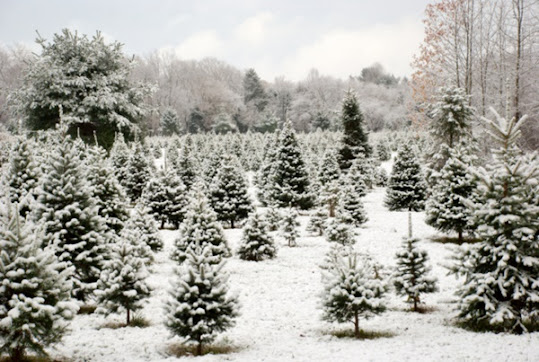The Christmas tree is also a tree, but is a decorated one
that is typically an evergreen conifer, like the spruce, fir or pine, or the
artificial tree of the same appearance, related to the observance of Christmas,
started from the Northern Europe. A tree was traditionally ornamented with
"roses made from wafers, tinsel, sweetmeats, colored paper, and apples.
Progress of Christmas Trees
1510 – The first ever written record of the decorated
Christmas Trees came from Riga, Latvia. The men from the native merchants’
guild ornamented the tree with the artificial roses, danced just about it in
the marketplace, and set flames with it. This rose was utilized for many years
and has been considered as the symbol for our Virgin Mary.
1530 – It had the record from France in Alsace that the trees
advertised in the market and was taken home and then set up undecorated. The laws
limited a size until “8 shoe lengths” (a bit more than 4 feet).
1600 – It was ordinary in Germany to ornament Christmas
Trees with an apple. This custom was a holdover which was from 14th to 15th
centuries when the evergreen boughs dangle with apples were its only prop being
used during the “miracle plays” which were executed at churches on 24th of December.
December 24 was called as Day of Adam & Eve during the calendar of early
Christian, and those plays were utilized as the ways of instructing the Bible
to the bigger illiterate population.
1700 – In some parts of Germany and Austria, evergreen tips had
been brought into the houses and dangled top down from a ceiling. They were usually
ornamented with red paper strips, apples, and gilded nuts. Edible decorations became
so famous on Christmas Trees which they were usually named as “sugar trees.”
The first ever accounts by utilizing lighted candles as ornaments on Christmas
Trees came during the 18th century from France.
1851 – Christmas Tree starts to become sold commercially in
United States. They had been taken by chance from the forest.
1853 – Franklin Pierce had been credited with taking in the
first ever Christmas Tree into the White House.
1883 – Sears, Roebuck and Company started offering the first
ever artificial Christmas tree.
1800s – The Christmas Trees was launched in United States by
the German settlers. It quickly grew from the tabletop size going to the floor
up-to-the-ceiling. The first ever glass decorations were introduced to the
United States, and again from Germany. It first ones were usually balls, then,
it became chains of balls, figures and toys became more common.
1900s – Because of overharvesting, the normal supply of
evergreens started to become decimated. Conservationists were alarmed, and lots
of magazines started to encourage the people to alternate an artificial “snow” roofed
tree, consisting of the branches of a deciduous tree wrapped in yarn or cotton.
1901 – The original Christmas Tree farm had started in 1901 during
the planting of W.V. McGalliard with 25,000 Norway spruce at his ranch in New
Jersey. Theodore Roosevelt attempted to halt the practice of owning Christmas
Trees since he was concerned about the forest destruction. His two sons did not
agree and then enlisted the assistance of Gifford Pinchot, a conservationist to
convince the president that, the practice wasn’t damaging to the forests
because it is done properly.
1930 – Pres. Franklin Roosevelt began the Christmas Treefarm at his estate at Hyde Park, in New York.
1966 – The Association of National Christmas Tree started its
time-honored customs of having a Grand Champion grower presented the Christmas
Tree to a First Lady for exhibit in a Blue Room of a White House. During that
year, Mr. Howard Pierce of the Black River Falls, from Wisconsin, presented the
tree to Pres. Lyndon Johnson and their First Lady Bird Johnson.

No comments:
Post a Comment